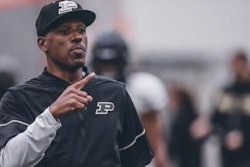Last summer, we implemented gender-neutral bathrooms on campus. The request for gender-neutral bathrooms had come from a student club that presented the administration with a letter of support, rather than a petition, with signatures from supporters across campus. They were intentional about not presenting a petition which, as they explained, would have set an adversarial tone.
The leadership of the club also wanted to meet with me to explain why they wanted to add some gender-neutral options for the bathrooms on campus and expressed that the college was a haven for them.
The challenges that these students presented were unfathomable to me as a heterosexual woman, and the arguments they presented were compelling. It was a no-brainer that we need to do this. It was a basic human rights issue that we needed to address. So, we kept some traditional bathrooms and turned others into gender-neutral ones.
We had members of the community who applauded the gender-neutral options and appreciated that we were taking one more step toward being more inclusive and embracing diversity. As with any change, we also had members of the community who were adamantly opposed to it. Rather than dismissing their concerns as pure ideological difference, we sought to understand their concerns. In listening to the community, some great suggestions were brought forward that we promptly implemented. Other concerns led to further discussions to clarify the rationale for the change or find a middle ground. In a few areas, we simply agreed to disagree.
I was reminded of this particular effort that we undertook to make good on our college’s commitment to equity, diversity and inclusion recently at the New York Times Higher Education Leaders’ Forum. This was an atypical and unique gathering different from most conferences within the academic arena. The forum was a much broader convening focused on salient contemporary issues within and outside of higher education that broadly affect society and civil society. The speakers came from diverse sectors, including staff from the Times, former Mayor Michael Bloomberg, think tank and nonprofit leaders, college and university faculty and executives, current and former politicians from both sides of the aisle and best-selling author Simon Sinek, among others.
While the conference covered a host of issues, the main take-away for me was the importance of promoting public discourse and diversity of thought, ideology, epistemology and embracing different views and people with different backgrounds and life journeys on our campuses.
The growing nationalism movement was a concern that many of the panelists at the forum shared. Former Virginia Gov. Terry McAuliffe, who led that state during the Charlottesville hate rally, emphatically made the case that our colleges and universities have to be institutions that bring people together and that appreciation for difference begins much early on in K-12.















